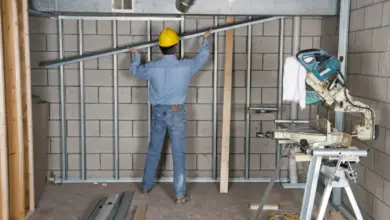The Woodworking Symbol of Feet and Inches
The Woodworking Symbol of Feet and Inches In Australia
G’day, mate! So, you’ve decided to dive into the world of woodworking, but there’s one thing that’s got you scratching your head – those pesky measurements in feet and inches. No worries, we’ve got you covered with a bit of fun and guidance on understanding the woodworking symbols of feet and inches, Aussie style!
[ez-toc]
Why Muck Up Your Measurements? Let’s Get it Right! Mate, one of the most common slip-ups beginners make in woodworking is getting the measurements all mixed up. This can lead to buying too much or too little timber or cutting your wood pieces wonkily.
But fear not! We’re here to make sure you get your measurements spot on by decoding the symbols for feet and inches in the world of woodworking.
Foot and Inches Symbols Down Under
The Aussies, just like our mates across the pond, use the good ol’ feet and inches to measure stuff. The standard way to represent feet is “ft.” or simply an apostrophe (‘). So, 8’ means eight feet. When it comes to inches, you’ll see them abbreviated as “in.” or, less commonly, “ins.” and they’re represented by a double prime (“). A simple 5” is five inches high.
Why We Use Feet and Inches? Now, you might wonder why we Aussies stick to this feet and inches business instead of the metric system. Well, it’s because we’ve got a knack for keeping things interesting! The metric system uses centimeters and meters, but when it comes to woodworking, we prefer the good old feet and inches.
In our world, one foot equals 12 inches, and inches are the smallest unit in the imperial system. When converting between meters and feet (or centimeters and inches), it’s super handy to have these symbols at our disposal. Plus, writing 5′ is way quicker than scribbling down 5 feet, right?
The Importance of Understanding Feet and Inches Symbols
Why bother with these symbols, you ask? Well, mate, when you’re out buying timber in a lumberyard or online, most places Down Under only list the dimensions using these symbols. They assume we’re all pros in the biz and don’t need explanations. So, if you want to avoid confusion when you see something like “2x4x4′,” you’d better get the hang of it!
The Feet Symbol: ‘ Lumber, boards, sidings, and pipes – they’re all measured in feet. If it’s longer than your arm, it’s usually measured in feet, making life easier for us beginners. And guess what? Most hardware stores and online shops prefer to use the trusty feet symbol – the good ol’ apostrophe (‘).
The Inch Symbol: “ Now, when it comes to inches, you’ll spot the double quotation marks (“). You can also abbreviate it as “in.” or “ins.” for inches, but many folks Down Under stick with “in.” – whether it’s singular or plural.
Converting Between Feet and Inches
Converting feet to inches or vice versa is a piece of cake. One foot equals twelve inches, mate! So, if you want to convert 24 inches to feet, just divide by 12, and you’ve got 2 feet. Easy as throwing a snag on the barbie!
What About Those Decimal Inches? Now, sometimes you’ll come across measurements in decimal inches when buying lumber. Let’s say you’ve got 11 pieces, and you need to know the total width in feet. Just divide 12 by 11, and you’ll get 3 feet and a smidge – 3’2.5″ to be exact.

The Lowdown on Lumber Dimensions
Lumber sizes can be a tad tricky, so let’s clear things up. DIY lumber usually goes by dimensional sizing, which means you’ll see measurements in inches. But here’s the catch – the lumber you buy is usually a tad smaller than the dimensions listed. For instance, a 2×6 is actually 1.5 inches thick by 5.5 inches wide. Sneaky, huh?
The Benefits of Symbols Over Abbreviations
You might be wondering why we’re so fond of symbols instead of abbreviations. Well, it’s all about saving time and space, mate! Symbols like ‘ and ” are quick to jot down, which is perfect for us Aussies who are always on the go. Plus, symbols help save space, so you can fit more measurements on a single page.
A Universal Language for Woodworking
Woodworking knows no boundaries, mate! Whether you’re in Oz or anywhere else, using symbols for measurements is like speaking a universal language. No need for translation – inches and feet are understood worldwide.
Wrapping It Up
So there you have it, a ripper guide to understanding feet and inches in the world of woodworking. Don’t let those measurements give you a headache – just remember the symbols ‘ and ” and you’ll be good as gold. Stay tuned for more woodworking wisdom in our next article about lumber sizes. Cheers!


